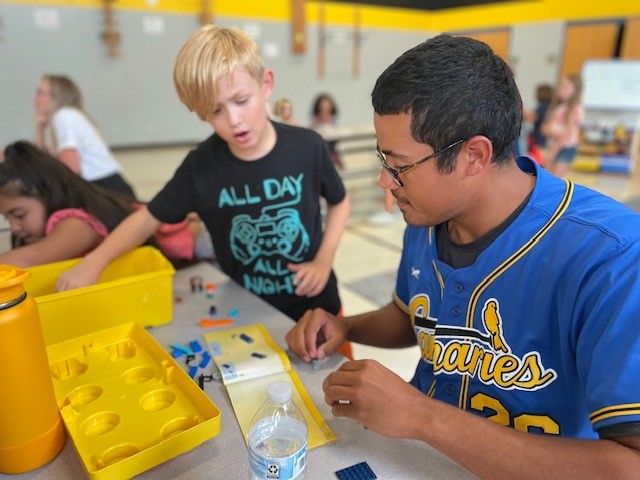Simplified: The Sioux Falls School District is revamping its entire after-school program and shifting to community learning centers, set to open this fall at all 22 elementary schools. Here's what you need to know.
Let's start with a definition
A community learning center (CLC) is a way to use school buildings as a conduit for local services. It's largely focused on – but not limited to – after-school care. Currently, four Sioux Falls elementary schools are piloting CLCs.
That's different from a community center, of which there are five in Sioux Falls. These are centers attached to elementary school buildings that are essentially a public recreation center with a free, open gym.
Why it matters
- Thousands of Sioux Falls kids don't currently have a place to go after school, according to a 2018 Augustana Research Intitute study. Barriers to after-school care often include cost and transportation. The community learning center model attempts to address both of those concerns.
- In addition to after-school care, these community learning centers will also give local service organizations a way to help reach people where they are to offer everything from cooking classes to parenting resources to programs promoting social and emotional development, said Rebecca Wimmer, coordinator of community partnerships for the Sioux Falls School District.
- In buildings with community centers the CLCs will take over use of community center space for CLC programming – a move that's generated some concern from parents and the City Council, who worry about eliminating the free, open gym option for kids.
"When we look at research, and we look at what really makes an impact on a child longterm, quality after-school programs have been shown to have a significant impact on grades, test scores, graduation rates, earnings later in life," Wimmer said. "Every child should have access to that. ... This shift is one way we can ensure that happens."
Ok, so who's paying for all of this?
The community learning centers are funded through grants and philanthropic donations to the Sioux Falls School District.
- No tax money is used for the programming, Wimmer said. It's all self-funded.
Parents will also pay a fee to access the after-school programming.
What's unique about the fee structure for the CLCs is that it casts a wider-than-typical net for who qualifies for financial assistance (i.e. scholarships), Wimmer said.
- The CLCs use a sliding fee structure that allows families to qualify for scholarships if they earn up to 300% of the poverty level. That means if you were a family of four, you could earn up to $90,000 annually as a household and still qualify for a partial scholarship.
- The program also charges parents based on affordability. Parents won't pay more than 4.5 percent of their income on after-school care at CLCs – regardless of how many children they have in the programs.
And, by having the CLCs take place in elementary schools, it eliminates the transportation barrier for many kids because their parents don't have to worry about finding a way to get them from school to a separate after-school program somewhere else.
How does this change the existing community centers?
City Councilors will be asked to vote to change the agreement between the city and the school district on how community centers are used.
It'll mean the district will have more control over the space, and it'll mean the community centers will be now used to host the community learning centers.
- That means no more open gym after school.
But, as city Recreation Manager Jackie Nelson told councilors last week, the CLCs will bring more structure and a higher student-to-adult ratio than the existing centers have.
"We're not free daycare," Nelson said of the community centers. "We're an afternoon gym program."
What does that mean for kids who used the open gym?
They'll have the option to join the community learning center after-school program.
As for the middle schoolers, only 30 to 40 kids citywide used the community centers daily, Wimmer said.
- After City Council expressed concerns last week, Wimmer sat down with a local agency who wrote a grant to help provide after-school programming for middle school and high school students.
"If you say there's a gap, I'm going to try to figure out how we can fill that gap," Wimmer said.
What happens next?
The City Council will ultimately decide on whether or not to amend the usage agreement for the community centers.
Regardless, the community learning centers will open in all 22 Sioux Falls elementary schools this fall.


